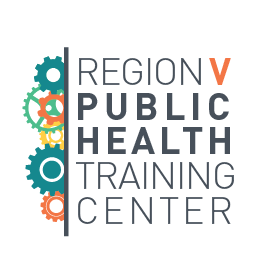By Harshada Karnik, Ph.D., M.S., M.P.P., Center for Public Health Systems, University of Minnesota – School of Public Health
The COVID-19 pandemic has affected all of us in some way or the other. We all lived through it, most of us worked through it, and a very small number of people – our public health (PH) officials included – had the mammoth task of trying to change trajectories and the status quo in addition to living and working during the pandemic. And mind you, this was a thankless job. No matter what our officials did, someone out there was willing to offer dissenting opinions. So how did the pandemic affect our health departments and officials?
The pandemic exposed the shortcomings of our PH systems and demonstrated the importance of ensuring resources for foundational public health services (FPHS) such as population-level policies. The pandemic also highlighted some new roles and responsibilities that PH departments must take on. For instance, the role of the communications officer was once limited to updating websites and producing routine public reports, but with people looking for real-time updates on social media, communications is now a dynamic and essential function of local health departments (LHDs), and more staff are needed. A recent study we conducted found that in other occupations, a lot of health departments in Minnesota need more staff, including public health nurses, community health workers, health planners, researchers, and analysts. Based on anecdotal evidence and conversations with health officials, I believe the needs are likely to be similar nationwide.
So why is it hard for health departments to hire people?
A lot of them face some kind of financial challenges. Over 50% of local health departments in Minnesota reported inadequate funds being a barrier to creating new permanent positions and offering competitive salaries. However, there are several other constraints too. LHDs operate in a complex political environment, where they work in conjunction with other health departments, city and county officials and boards, and state and federal agencies. They must adhere to laws and ordinances at all different levels. So sometimes even when funds are available, they come with clauses and restrictions. At other times, health departments must receive authorization from elected or appointed officials before they can create a position. They are also constrained by union and collective bargaining unit policies that outline compensation rules. If LHDs cannot pay competitive wages, it is difficult to retain staff, especially public health nurses who can make a lot more money working in clinical settings.
And how did this impact health departments?
First of all, it directly affected the health officials who run our health departments. We saw early retirements and voluntary separations. Health officials were burned out and experienced higher stress levels. They also assumed additional responsibilities. There were also changes in operations. Health departments scaled back programs and services, redistributed staff across program areas, and reorganized programs and priorities. They relied more on temporary staff and contractors, partnered with other organizations, and in some instances, neglected important yet non-time-sensitive responsibilities or missed deadlines.
What did we learn?
- First, health departments provide foundational services that can be considered a public good. Local health departments have consistently shrunk in the last two years. Sufficient and sustainable public funding is important to help them grow, keep up with the needs of their constituents, and provide uninterrupted foundational services for the well-being of residents.
- Second, to ensure adequate levels of staffing, in addition to more funding, health departments need to evaluate and negotiate both their internal policies as well as the complex political environment they operate in. Reviewing and updating internal HR policies will also help health departments recruit new staff and retain existing staff.
- Additionally, more needs to be done to help health departments develop and utilize tools to promote equity internally so that they are well-poised to promote health equity in their communities and understand their strengths as employers so they can highlight those to recruit new personnel.
To learn more, check out these resources:
- Public Health Model Job Descriptions Project
- Public Health Advocacy, Demystified – Part 1 (On Demand-CE)
- Public Health Advocacy, Demystified – Part 2 (On Demand-CE)
- Integrating Equity into Work: Racial Equity Resource Library

